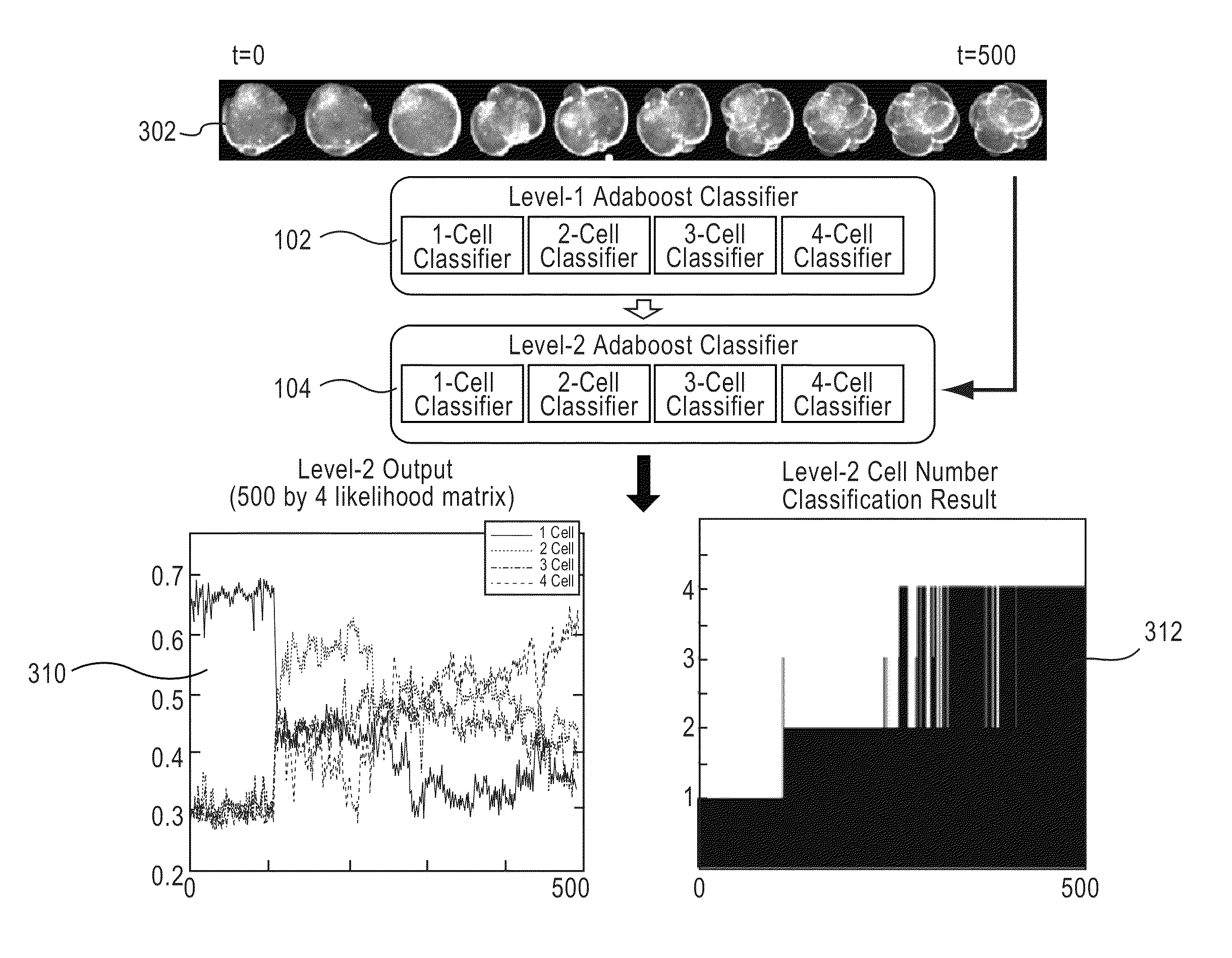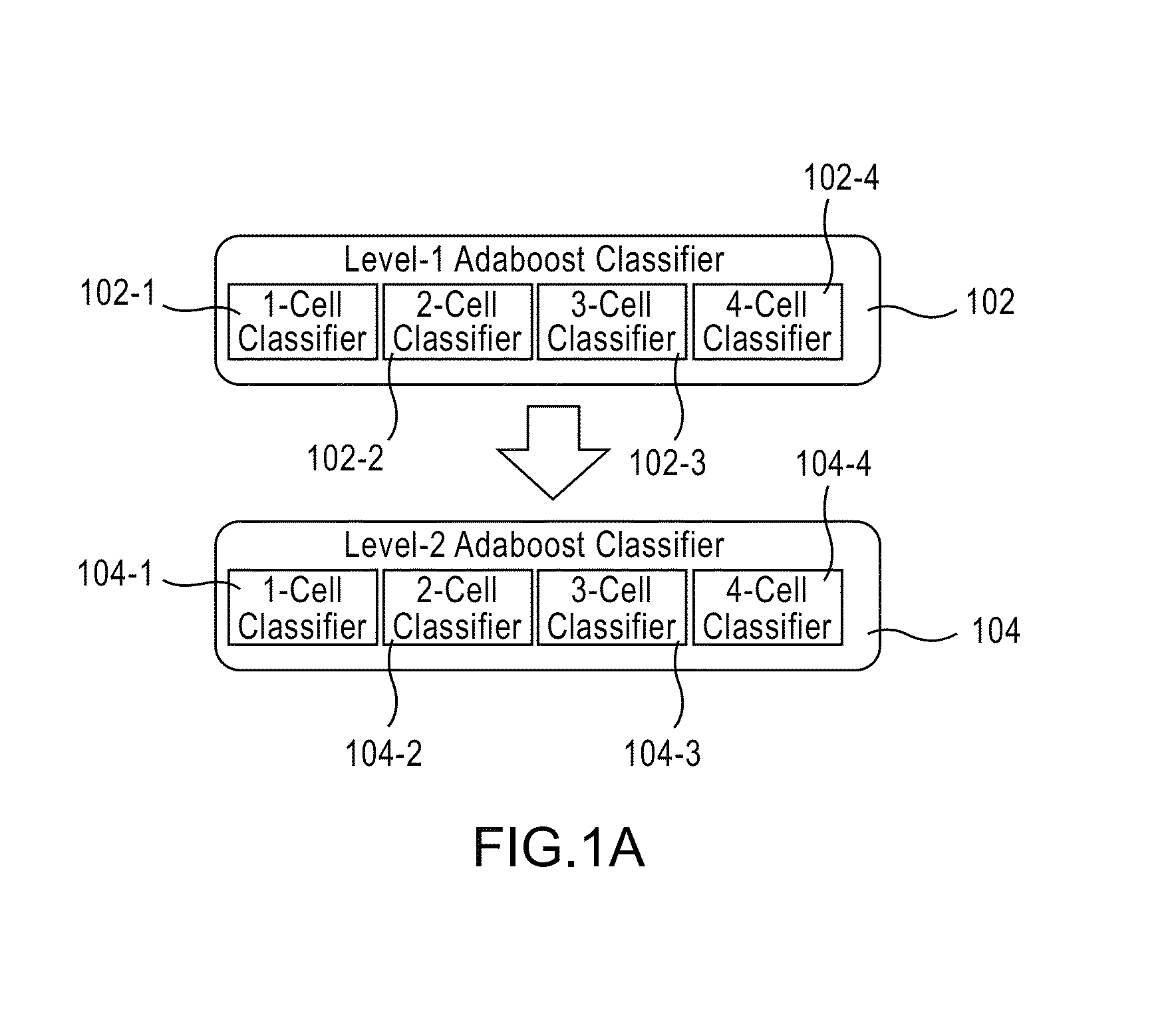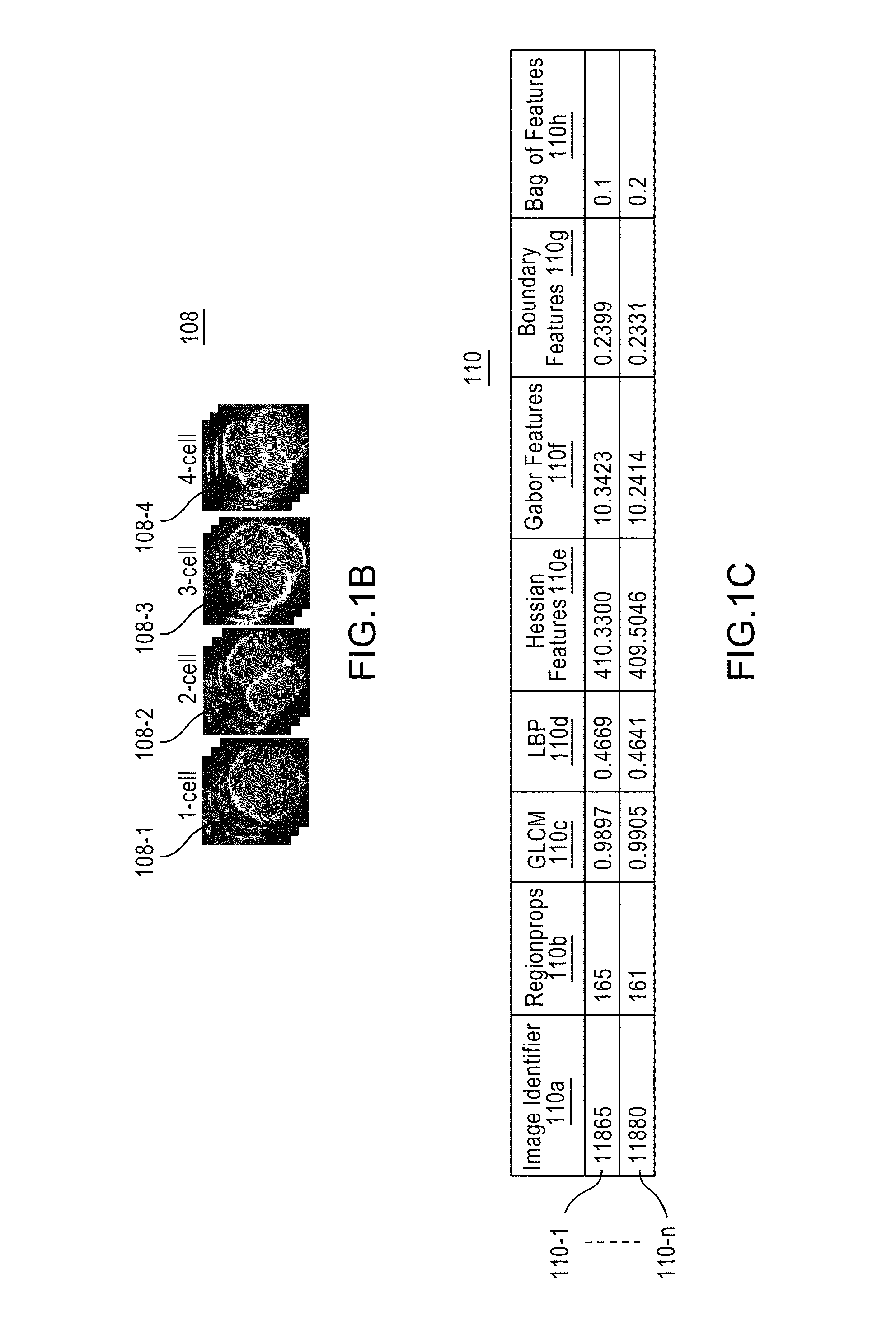Apparatus, method, and system for image-based human embryo cell classification
a human embryo cell and image-based technology, applied in the field of cell classification and/or outcome determination, can solve the problems of low birth rate, miscarriage, and well-documented adverse outcomes for both mother and fetus
- Summary
- Abstract
- Description
- Claims
- Application Information
AI Technical Summary
Benefits of technology
Problems solved by technology
Method used
Image
Examples
example 1
[0212]This example presents a multi-level embryo stage classification method to estimate the number of cells at multiple time points in a time-lapse microscopy video of early human embryo development. A 2-level classification model is proposed to classify embryo stage within a spatial-temporal context. A rich set of discriminative embryo features are employed, hand-crafted, or automatically learned from embryo images. The Viterbi algorithm further refines the embryo stages with the cell count probabilities and a temporal image similarity measure. The proposed method was quantitatively evaluated using a total of 389 human embryo videos, resulting in a 87.92% overall embryo stage classification accuracy.
[0213]Introduction
[0214]Timing / morpho-kinetic parameters measured from time-lapse microscopy video of human embryos, such as the durations of 2-cell stage and 3-cell stage, have been confirmed to be correlated with the quality of human embryos and therefore can be used to select embryo...
example 2
[0251]As noted earlier, some aspects of the invention are also operable for tracking of cell activity. Accordingly, some aspects of the invention are operable for automated, non-invasive cell activity tracking. In some embodiments, automated, non-invasive cell activity tracking is for determining a characteristic of one or more cells without invasive methods, such as injection of dyes. The cell activity tracking can be applied to one or more images of one or more cells. The images can be a time-sequential series of images, such as a time-lapse series of images. The cell(s) shown in the plurality of images can be any cell(s) of interest. For example, the cells can be a human embryo that may have one or more cells. Other examples of such cells of interest include, but are not limited to, oocytes and pluripotent cells.
[0252]In some embodiments, a number of the cells in each image is of interest, and can be determined by an embodiment of the invention. For example, the number of cells c...
example 3
[0376]Human embryo tracking can face challenges including a high dimensional search space, weak features, outliers, occlusions, missing data, multiple interacting deformable targets, changing topology, and a weak motion model. This example address these by using a rich set of discriminative image and geometric features with their spatial and temporal context. In one embodiment, the problem is posed as augmented simultaneous segmentation and classification in a conditional random field (CRF) framework that combines tracking based and tracking free approaches. A multi pass data driven approximate inference on the CRF is performed. Division events were measured during the first 48 hours of development to within 30 minutes in 65% of 389 clinical image sequences, winch represents a 19% improvement over a purely tracking based or tracking free approach.
[0377]Augmented Simultaneous Segmentation and Classification
[0378]Augmented simultaneous segmentation and classification leverages trackin...
PUM
 Login to View More
Login to View More Abstract
Description
Claims
Application Information
 Login to View More
Login to View More - R&D
- Intellectual Property
- Life Sciences
- Materials
- Tech Scout
- Unparalleled Data Quality
- Higher Quality Content
- 60% Fewer Hallucinations
Browse by: Latest US Patents, China's latest patents, Technical Efficacy Thesaurus, Application Domain, Technology Topic, Popular Technical Reports.
© 2025 PatSnap. All rights reserved.Legal|Privacy policy|Modern Slavery Act Transparency Statement|Sitemap|About US| Contact US: help@patsnap.com



